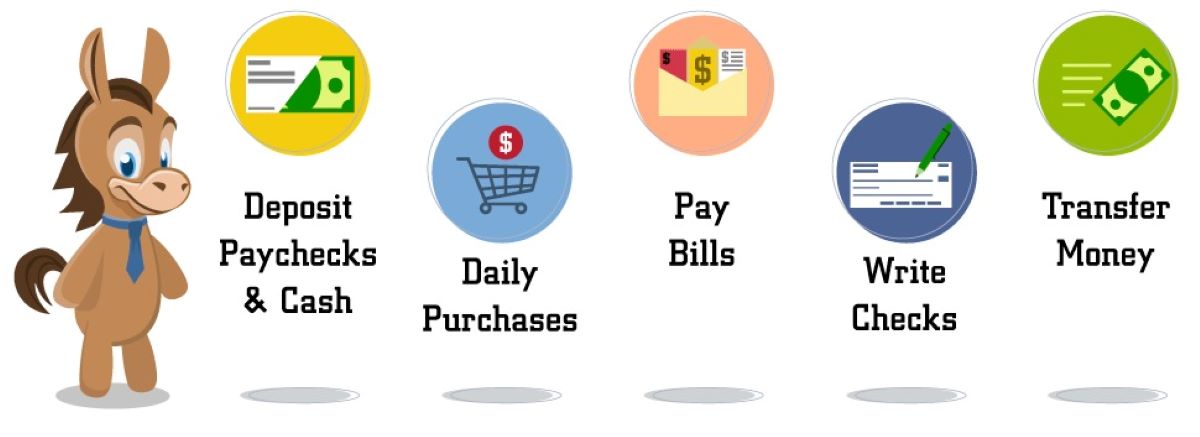Home>Finance>Questions To Ask When Purchasing A Small Business


Finance
Questions To Ask When Purchasing A Small Business
Published: November 26, 2023
Looking to buy a small business? Check out our list of essential finance questions to ask before making a purchase. Get the insights you need to make a smart investment.
(Many of the links in this article redirect to a specific reviewed product. Your purchase of these products through affiliate links helps to generate commission for LiveWell, at no extra cost. Learn more)
Table of Contents
Introduction
When considering the purchase of a small business, it is essential to conduct a thorough evaluation to ensure a sound investment. Acquiring a business involves more than just financial transactions; it entails understanding the various aspects that contribute to its success or failure.
As a potential buyer, you need to dig deep into the company’s operations, financial stability, market position, and potential for growth. Asking the right questions will enable you to assess the viability, profitability, and risks associated with the business.
In this article, we will discuss the crucial questions you should ask when purchasing a small business. These questions will help you evaluate the financial performance, operations, market positioning, growth opportunities, and other essential factors that can impact the success of your investment.
By addressing these questions, you can make informed decisions and validate the viability of the small business you intend to buy. Let’s explore these questions in more detail.
Financial Performance
One of the most critical aspects to examine when purchasing a small business is its financial performance. You need to understand how the company has been performing financially to determine its profitability and potential for growth.
Start by reviewing the financial statements, including income statements, balance sheets, and cash flow statements, for the past few years. Pay close attention to key financial metrics such as revenue, profit margins, cash flow, and debt levels.
Here are some questions to ask:
- What has been the company’s revenue growth over the years?
- Are there any seasonal or cyclical patterns in the company’s financial performance?
- What are the profit margins and net income of the business?
- Does the business have any outstanding debt or liabilities?
- Are there any significant fluctuations in expenses or costs?
Moreover, consider asking for the reasons behind any significant changes or trends in the financial statements. This will help you identify any underlying issues or opportunities that can impact the future financial performance of the business.
It’s also crucial to conduct a detailed analysis of the company’s financial ratios, such as liquidity ratios, profitability ratios, and leverage ratios. These ratios can provide insights into the company’s ability to meet its financial obligations, generate returns, and manage its debt.
A thorough understanding of the financial performance will help you evaluate the business’s profitability, cash flow generation, and overall financial health. It will also serve as a basis for financial projections and valuing the business.
Operations and Processes
When purchasing a small business, it is essential to gain a deep understanding of its operations and processes. This will enable you to evaluate the efficiency, scalability, and potential areas for improvement within the business.
Here are some key questions to ask:
- What are the core operational processes of the business?
- How are these processes documented, and are they efficient?
- What is the level of automation and technology utilization within the business?
- Are there any bottlenecks or inefficiencies in the current operations?
- How reliant is the business on key individuals or a single supplier?
Furthermore, consider evaluating the supply chain management processes, inventory management systems, and quality control procedures in place. Assessing the operational framework will help you determine the business’s ability to meet customer demands, ensure consistent product or service delivery, and adapt to changes in the market.
It is also crucial to inquire about the business’s relationships with suppliers and vendors. Understand the terms and conditions of these relationships, as well as any potential risks or dependencies associated with them.
Additionally, investigate the business’s level of compliance with relevant industry regulations and standards. This is particularly important if the industry is heavily regulated, as non-compliance can result in fines, legal issues, or reputational damage.
By thoroughly evaluating the operations and processes, you can identify areas for improvement, streamline workflows, and enhance overall operational efficiency. This will contribute to the long-term sustainability and growth of the business.
Business Model
The business model serves as the foundation of any organization, shaping its revenue streams, cost structure, value proposition, and competitive advantage. When considering the purchase of a small business, it is crucial to examine and understand its business model.
Here are several key questions to ask:
- What is the core value proposition of the business?
- How does the business generate revenue?
- What are the key cost drivers and expense categories?
- Is the business model sustainable in the long run?
- Does the business have a unique selling proposition or competitive advantage?
Analyze the business’s target market and customer segments. Understand the customer needs and preferences, as well as the business’s approach to acquiring and retaining customers.
Assess how the business differentiates itself from competitors. Analyze its pricing strategy, product or service positioning, and any unique features or benefits it offers to customers.
Moreover, evaluate the scalability and adaptability of the business model. Consider how easily the business can expand into new markets, introduce new products or services, or pivot in response to changing customer demands or industry trends.
Understanding the business model will enable you to assess its future potential, competitive position, and sustainability. It will also guide you in identifying potential growth opportunities and strategies to maximize profitability.
Customers and Market
The success of a small business heavily relies on its ability to attract and retain customers. When considering a purchase, it is vital to thoroughly assess the customer base and the market dynamics in which the business operates.
Here are some key questions to ask:
- Who are the target customers of the business?
- What is the size and growth potential of the target market?
- Does the business have a strong customer base, with high customer loyalty?
- What are the customer acquisition channels and marketing strategies employed by the business?
- How does the business stay informed about customer needs and market trends?
Conduct market research to gain insights into the target market’s demographics, preferences, and buying behavior. Understand the competitive landscape and the position of the business within it.
Assess the business’s marketing and branding strategies and evaluate their effectiveness. Consider the business’s online presence, social media engagement, and customer reviews to gauge its reputation and customer satisfaction levels.
Additionally, consider the potential for market growth or disruption. Identify any emerging trends, technological advancements, or regulatory changes that may impact the business and its market in the future.
Understanding the customers and market dynamics will help you evaluate the business’s growth potential, competitive advantage, and customer retention strategies. It will also guide you in identifying potential marketing opportunities and target market segments.
Competition
Assessing the competitive landscape is crucial when considering the purchase of a small business. Understanding the competition will help you determine the business’s market position, differentiation strategies, and potential threats.
Here are several key questions to ask:
- Who are the direct competitors of the business?
- What are the competitor’s strengths and weaknesses?
- How does the business differentiate itself from competitors?
- Is the market saturated with competitors, or is there room for growth?
- Are there any emerging competitors or disruptive technologies that may impact the business?
Conduct a competitive analysis to gain insights into the strengths, weaknesses, and market positioning of the business’s competitors. Evaluate their product or service offerings, pricing strategies, customer base, and marketing tactics.
Identify the business’s unique selling proposition or competitive advantage and assess its sustainability in the face of competition. Determine how the business can maintain or strengthen its market position.
Furthermore, consider any potential threats or opportunities presented by emerging competitors or disruptive technologies. Stay informed about industry trends, innovations, and changes that may impact the business’s competitiveness.
A thorough understanding of the competition will help you assess the business’s ability to withstand competition, differentiate itself, and maintain a competitive edge. It will also guide you in developing strategies to position the business effectively within the market.
Legal and Regulatory Factors
When considering the purchase of a small business, it is crucial to evaluate the legal and regulatory landscape in which the business operates. Understanding the legal requirements and potential risks will help you assess the business’s compliance and ensure a smooth transition.
Here are some key questions to ask:
- What are the relevant licenses, permits, and certifications required to operate the business?
- Has the business been compliant with all applicable laws and regulations?
- Are there any pending legal issues or disputes that may affect the business?
- Have all necessary contracts, agreements, and intellectual property rights been properly documented and protected?
- Are there any industry-specific regulations that the business needs to comply with?
Review all legal documents, including contracts with suppliers and clients, leases, employee agreements, and any pending litigation. Seek legal advice if necessary to ensure a comprehensive understanding of the business’s legal standing.
Evaluate any potential risks associated with compliance, such as environmental regulations, labor laws, or data privacy requirements. Assess the business’s risk management procedures and its history of mitigating legal and regulatory risks.
Additionally, consider any intellectual property rights owned by the business, such as patents, trademarks, or copyrights. Ensure that these assets are properly protected and transferred as part of the purchase process.
Understanding the legal and regulatory factors will help you mitigate potential risks and ensure a smooth transition. It will also enable you to identify any legal constraints or opportunities that may impact the future operations and growth of the business.
Employees and Human Resources
When purchasing a small business, it is crucial to evaluate the human resources aspect of the company. The employees play a vital role in the success of the business, and understanding their capabilities, engagement, and potential challenges is essential.
Here are several key questions to ask:
- How many employees does the business have, and what are their roles and responsibilities?
- What is the level of employee satisfaction and engagement?
- Are there any key employees crucial to the business’s operations or relationships?
- What are the training and development programs in place?
- Are there any labor or union-related issues to be aware of?
Evaluate the productivity levels and skills of the employees. Assess their qualifications, experience, and potential for growth within the company.
Consider the business’s compensation and benefits structure to ensure it aligns with industry standards and motivates employee performance.
It is essential to review any existing employment contracts, non-compete agreements, or non-disclosure agreements to understand the terms and conditions of employment.
Furthermore, assess the business’s culture and work environment. Consider the level of collaboration, communication, and teamwork among employees. Evaluate the turnover rate and any challenges related to employee retention.
Understanding the employees and human resources will help you assess the business’s capacity to operate efficiently, retain key talent, and create a positive work culture. It will also guide you in identifying any potential HR-related challenges or opportunities that may impact the future success of the business.
Technology and IT Infrastructure
In today’s digital age, technology plays a vital role in the success of a small business. It is essential to evaluate the technology infrastructure and capabilities of the business to ensure efficiency, security, and scalability.
Here are some key questions to ask:
- What is the current technology infrastructure of the business?
- Does the business utilize up-to-date hardware and software?
- Are there any cybersecurity measures in place to protect sensitive information?
- What are the backup and disaster recovery plans?
- Are there any IT-related contracts or service agreements in place?
Evaluate the effectiveness of the current technology systems and determine if any upgrades or improvements are necessary. Assess the business’s ability to adopt new technologies and stay competitive in the market.
Consider the data security measures implemented by the business, such as firewalls, encryption, and employee access controls. Assess the risk of potential cybersecurity threats and any previous incidents or breaches.
Review any existing IT-related contracts and service agreements to understand the terms, costs, and limitations of the technology infrastructure.
Additionally, evaluate the business’s ability to adapt to technological advancements and changing customer preferences. Assess the online presence, website functionality, and e-commerce capabilities of the business.
Understanding the technology and IT infrastructure will help you identify any gaps, risks, or opportunities for improvement. It will also guide you in developing strategies to enhance operational efficiency, protect sensitive data, and leverage technology to drive business growth.
Growth Opportunities
Assessing the potential for growth is crucial when considering the purchase of a small business. Identifying growth opportunities will allow you to maximize the business’s potential and ensure a return on your investment.
Here are several key questions to ask:
- What are the current market trends and opportunities within the industry?
- Are there any untapped customer segments or geographical markets?
- What are the potential expansion strategies for the business?
- Is there room for product or service diversification?
- Are there any opportunities for strategic partnerships or acquisitions?
Conduct market research to understand the market’s current and projected growth rates, customer demands, and emerging trends. Identify any gaps or underserved areas within the market that the business can exploit.
Evaluate the scalability of the business model and its ability to expand into new markets or diversify its product or service offerings. Consider the feasibility of geographical expansion or entering new customer segments.
Assess the potential for strategic collaborations, whether it be through partnerships, joint ventures, or acquisitions. Explore opportunities to leverage the existing customer base, distribution channels, or technology platforms.
Furthermore, consider the potential for digital transformation or adopting new technologies to drive growth. Evaluate the business’s online presence, e-commerce capabilities, and potential for leveraging data analytics to enhance decision-making and customer experiences.
Understanding the growth opportunities will help you identify strategies to capitalize on the business’s potential and ensure its long-term success. It will also guide you in developing a roadmap for growth and aligning your investment with the business’s growth objectives.
Risks and Challenges
Assessing the risks and challenges associated with the purchase of a small business is essential to mitigate potential setbacks and ensure a successful investment. Understanding the potential risks will allow you to develop strategies to overcome challenges and protect your investment.
Here are several key questions to ask:
- What are the key risks specific to the industry in which the business operates?
- Are there any financial risks, such as high levels of debt or cash flow issues?
- What are the risks associated with dependence on key customers or suppliers?
- Are there any regulatory or legal risks that may impact the business’s operations?
- Are there any risks associated with the competitive landscape?
Identify any industry-specific risks, such as technological obsolescence, changing consumer preferences, or economic instability. Assess the potential impact of these risks on the business’s operations and profitability.
Evaluate the financial health of the business, including its debt levels, cash flow stability, and financial projections. Identify any potential gaps or risks in the business’s financial planning and sustainability.
Consider the risks associated with key customer relationships or suppliers, such as the potential loss of key accounts or disruptions in the supply chain. Identify contingency plans to mitigate these risks and ensure a smooth transition in the event of any changes.
Furthermore, assess the potential legal and regulatory risks, such as compliance issues, intellectual property disputes, or changes in legislation that may impact the business’s operations.
Analyze the competitive landscape and identify potential threats from existing competitors, new entrants, or disruptive technologies. Develop strategies to differentiate the business and mitigate competitive risks.
Understanding the risks and challenges will help you develop a comprehensive risk management plan. It will enable you to proactively address potential setbacks and position the business for long-term success.
Exit Strategy
Planning for an exit strategy is a vital consideration when purchasing a small business. An exit strategy ensures that you have a clear plan for selling or divesting your investment in the future, allowing you to maximize your returns and transition smoothly out of the business.
Here are several key questions to ask:
- What is your desired timeline for owning the business?
- What are the potential exit options available to you?
- What factors would trigger the decision to sell or exit the business?
- What is the estimated valuation of the business and potential return on investment?
- Would you consider selling to a competitor, strategic buyer, or exploring other acquisition opportunities?
Consider the personal goals and aspirations that would influence your decision to exit the business. Determine whether you are looking for a short-term or long-term investment and align your exit strategy accordingly.
Research the potential exit options available to you, such as selling the business to a competitor, passing it down to a family member, or going public through an IPO. Understand the pros and cons of each option and evaluate their feasibility.
Additionally, assess the estimated valuation of the business based on its assets, financial performance, and market conditions. Consider the potential return on investment and whether it aligns with your financial goals.
Explore potential buyers or acquisition opportunities that may arise in the future. Research strategic buyers who may have an interest in the industry or competitors seeking to expand their market presence.
Planning for an exit strategy in advance will enable you to make informed decisions about the business’s growth and future opportunities. It provides you with a clear roadmap for achieving your financial objectives and transitioning out of the business when the time is right.
Conclusion
When considering the purchase of a small business, conducting a thorough evaluation is paramount to ensure a successful investment. By asking the right questions in key areas, you can gain in-depth insights into the financial performance, operations, market positioning, growth opportunities, and potential risks of the business.
Examining the financial performance will provide a clear understanding of the business’s profitability, cash flow generation, and financial stability. Understanding the operations and processes will allow you to assess efficiency, scalability, and areas for improvement. Evaluating the business model helps identify its value proposition, revenue streams, and competitive advantage.
An analysis of the customers and market dynamics enables you to recognize target markets, growth potential, and competitive threats, while assessing the competition helps to drive differentiation and identify market positioning strategies. Understanding legal and regulatory factors mitigates legal risks and ensures compliance with industry standards.
Evaluating human resources and technology infrastructure aids in assessing talent capabilities, engagement levels, and the potential for digital transformation. Identifying growth opportunities allows for maximizing the business’s potential, while considering risks and challenges helps develop strategies to mitigate setbacks.
Ultimately, planning for an exit strategy ensures a smooth transition out of the business and provides clarity on maximizing returns on your investment. By considering these essential factors and asking the right questions, you can make informed decisions and increase the likelihood of a successful acquisition of a small business.
Remember, purchasing a small business is not just about financial transactions; it’s about understanding the intricacies of the business and the market it operates in. Armed with the knowledge gained through comprehensive evaluation, you can confidently embark on the journey of acquiring and growing a small business.














